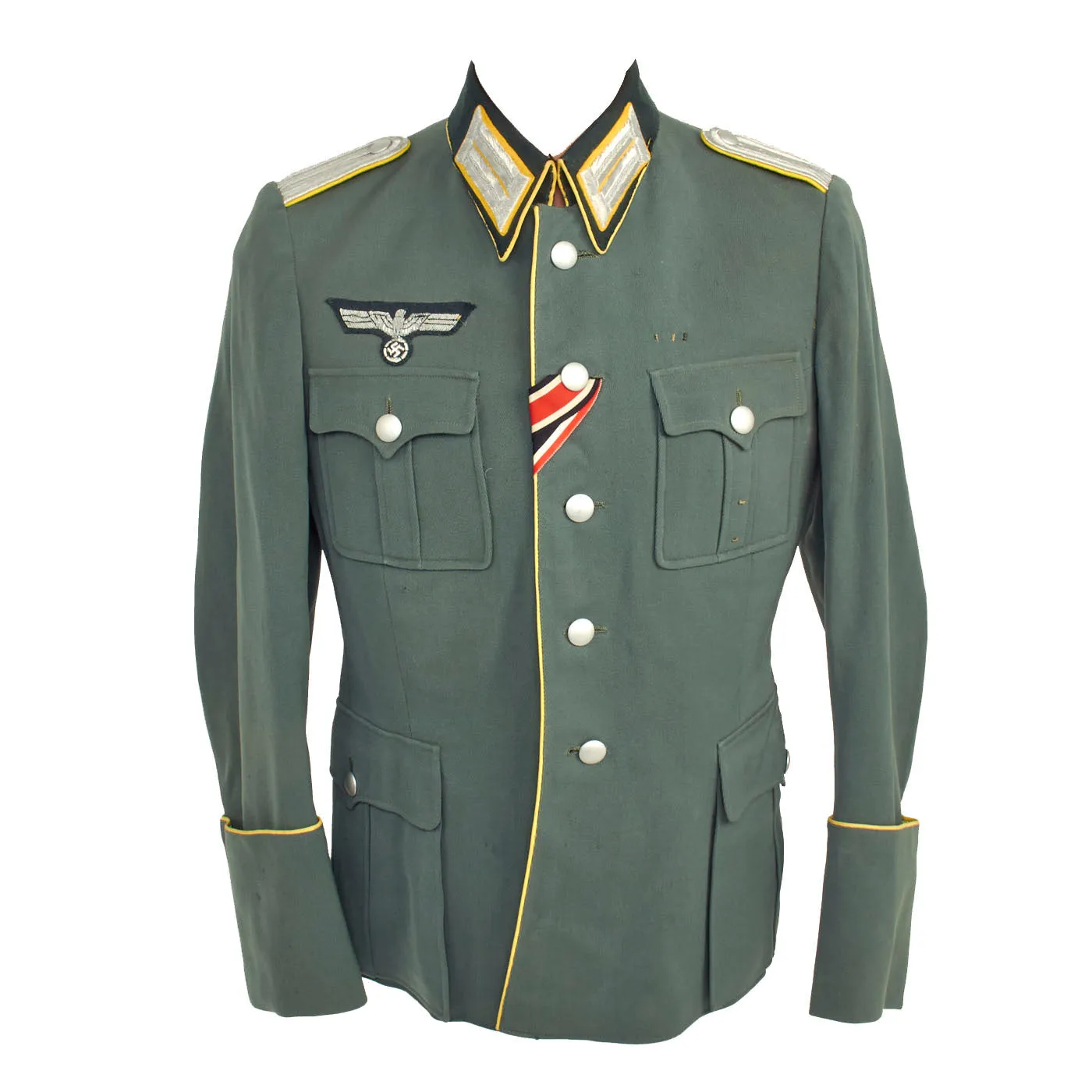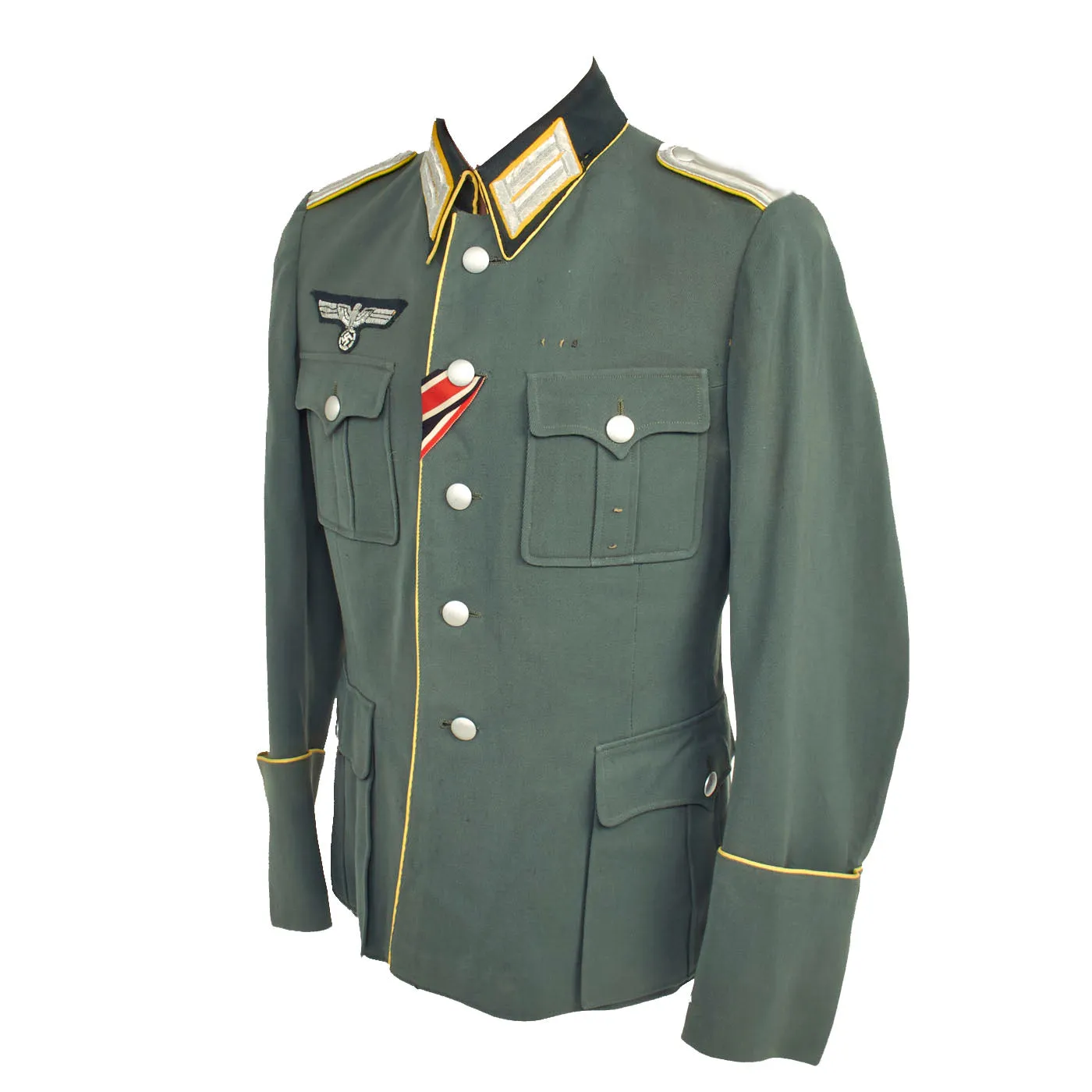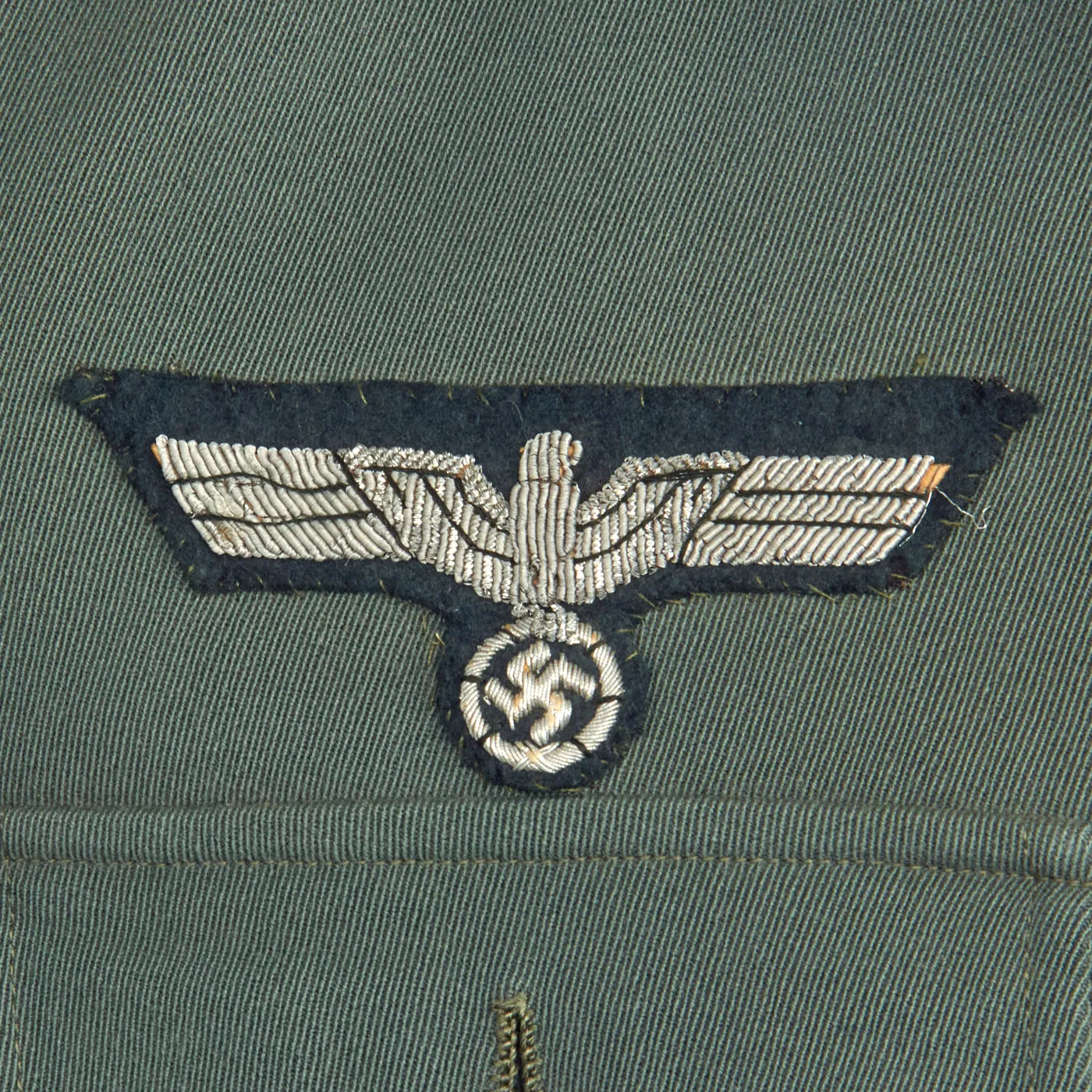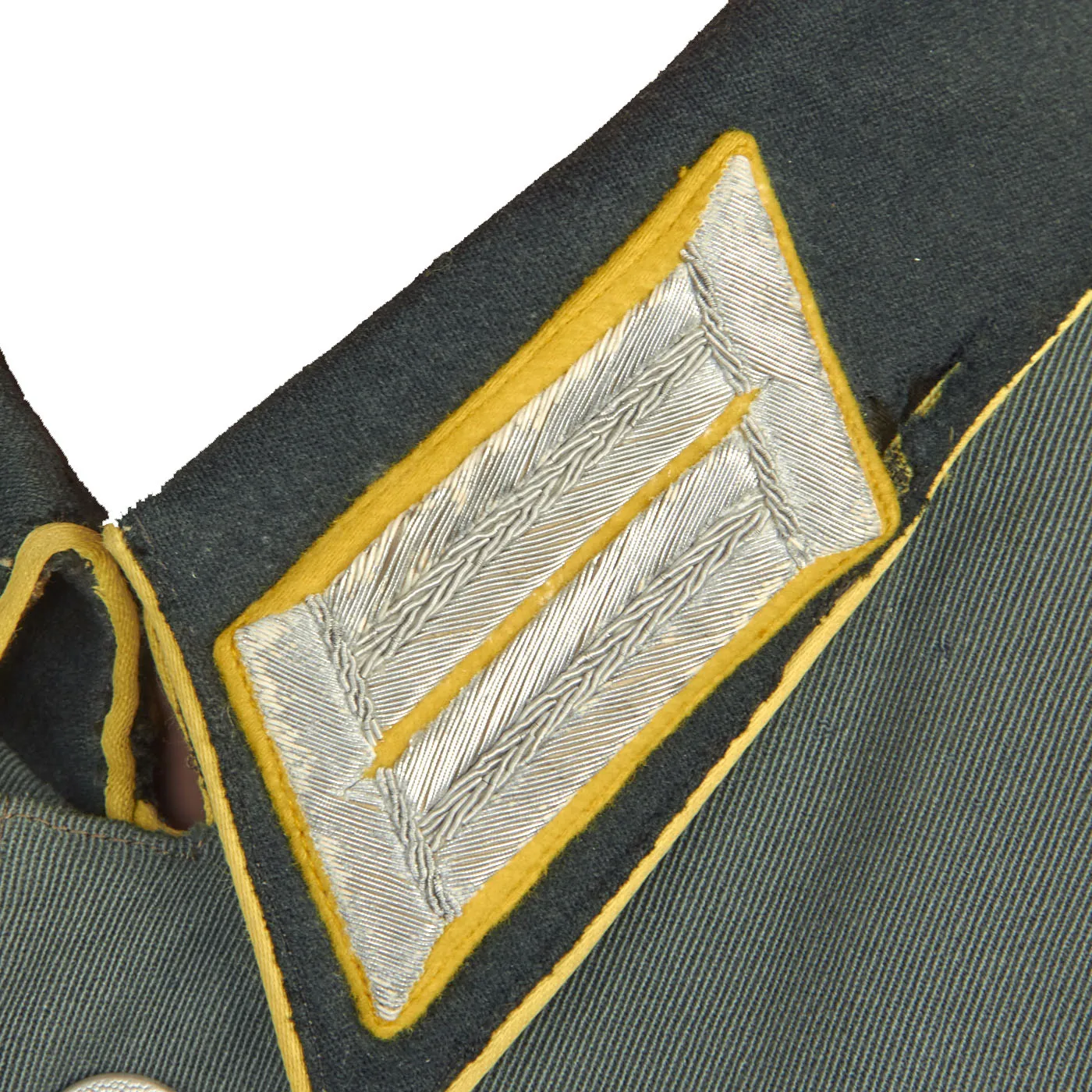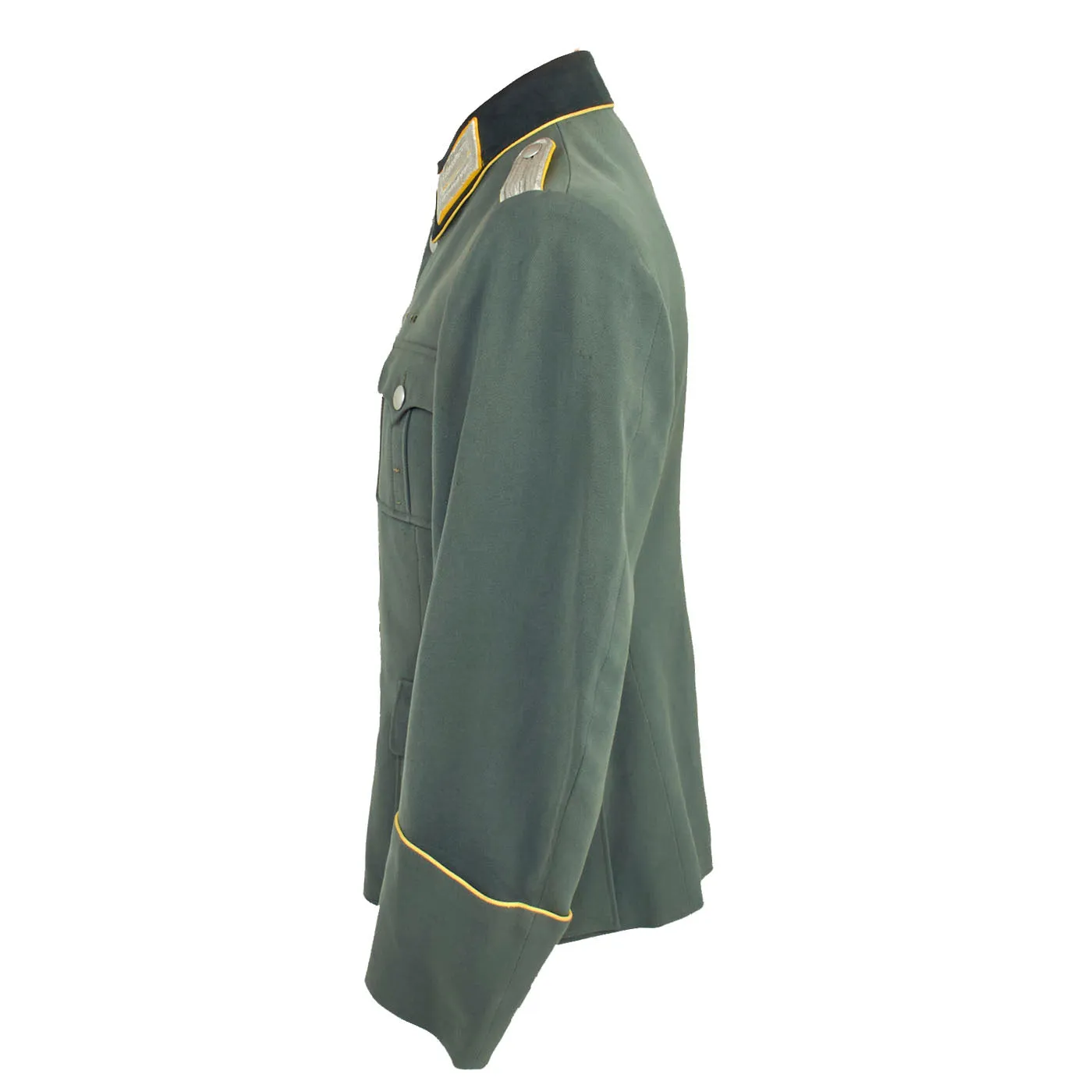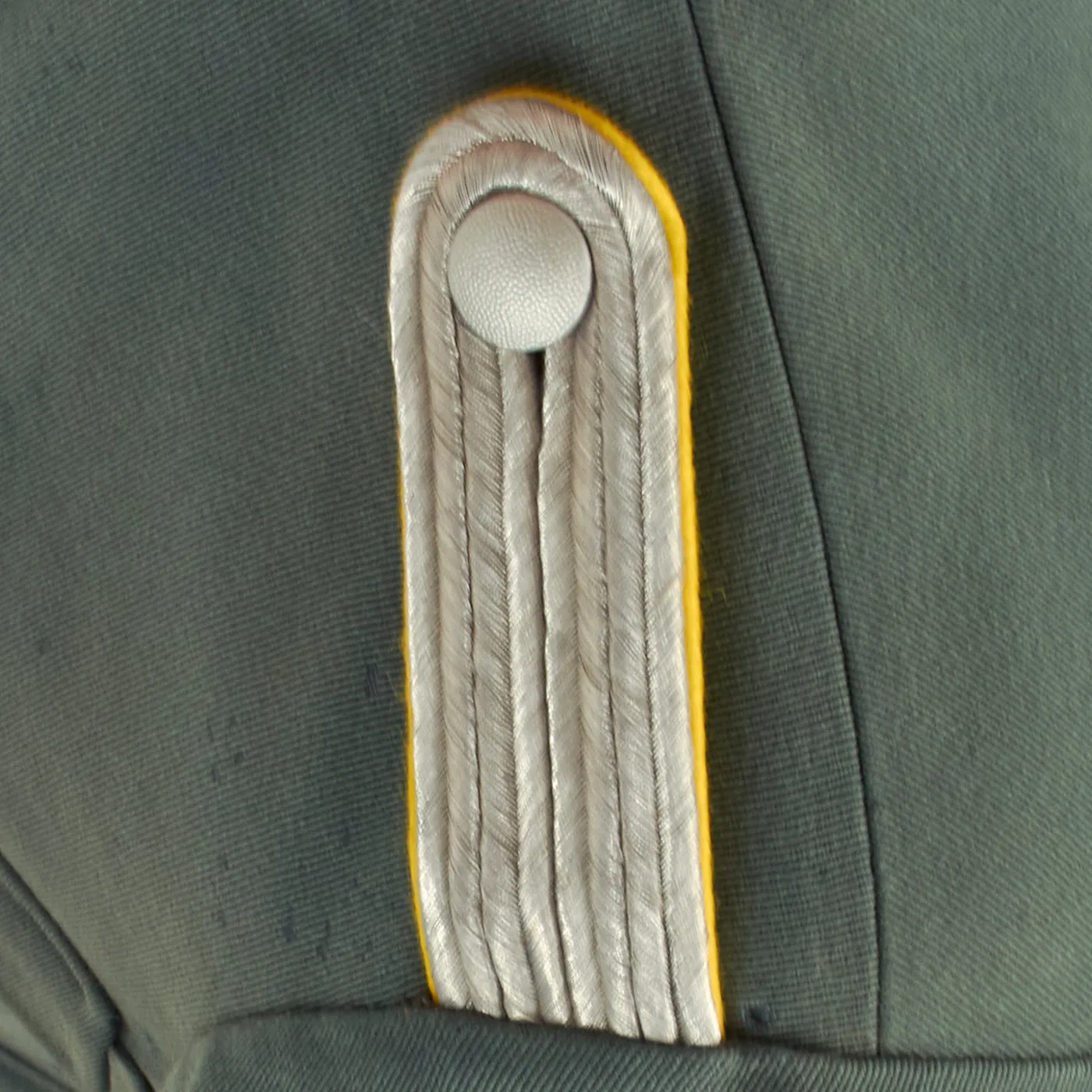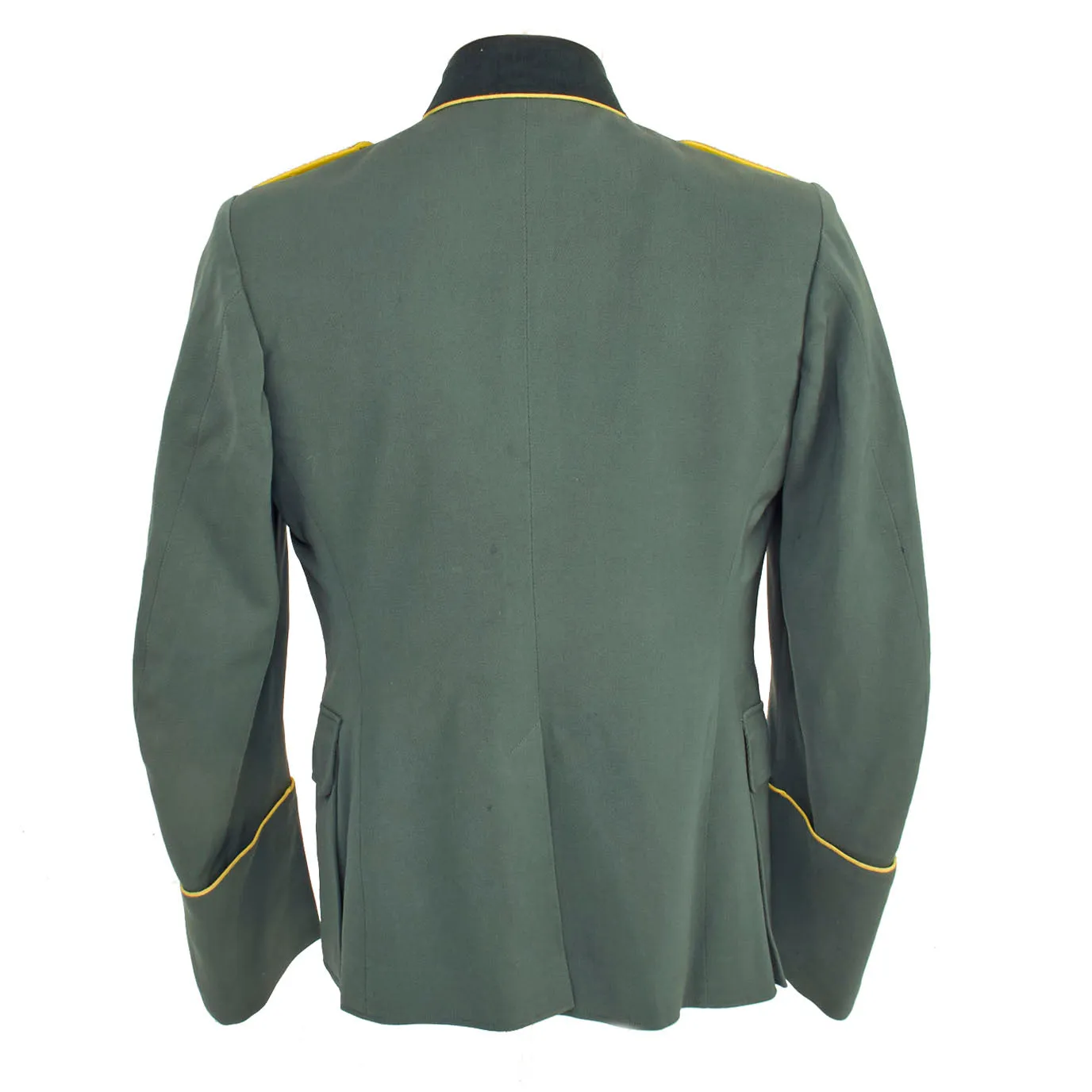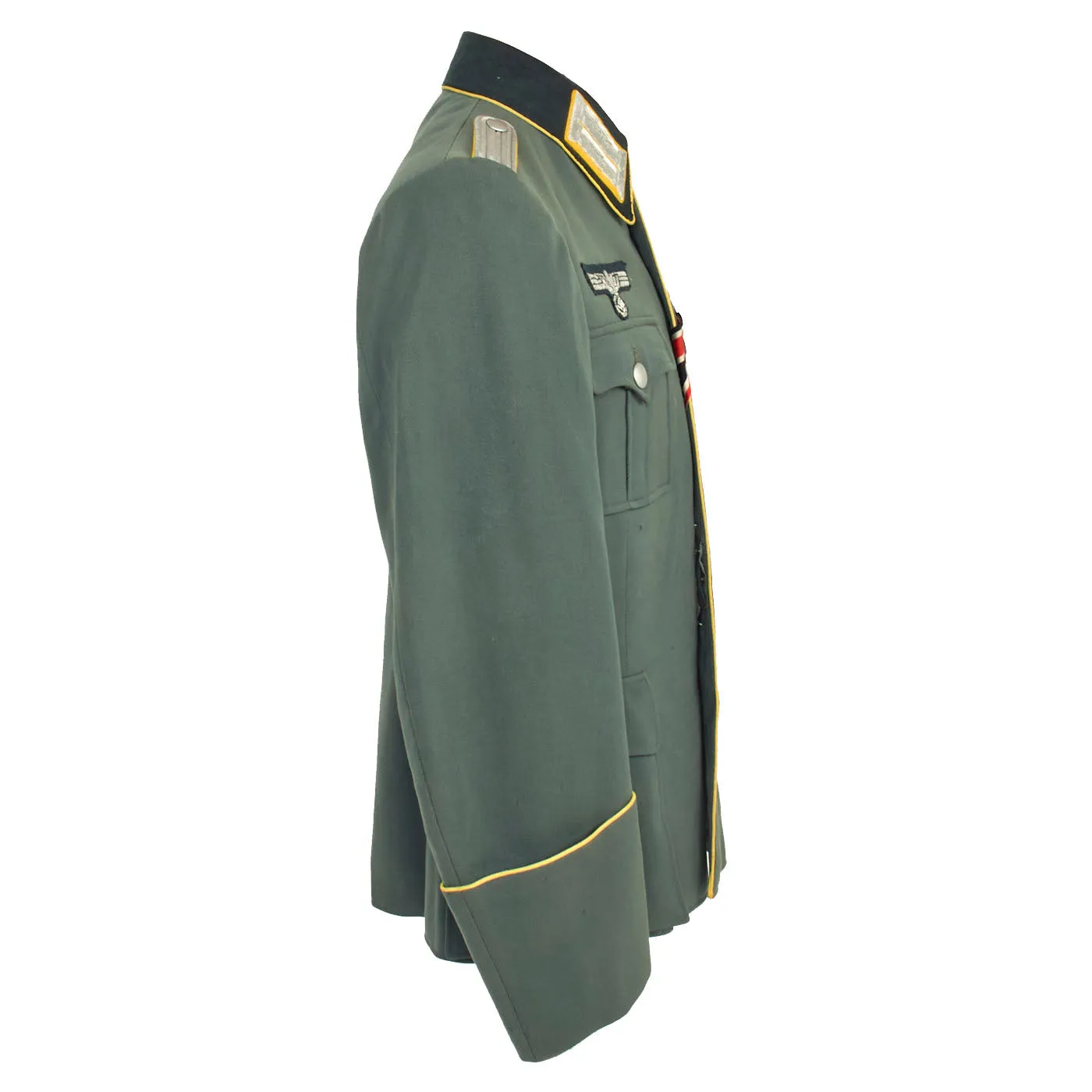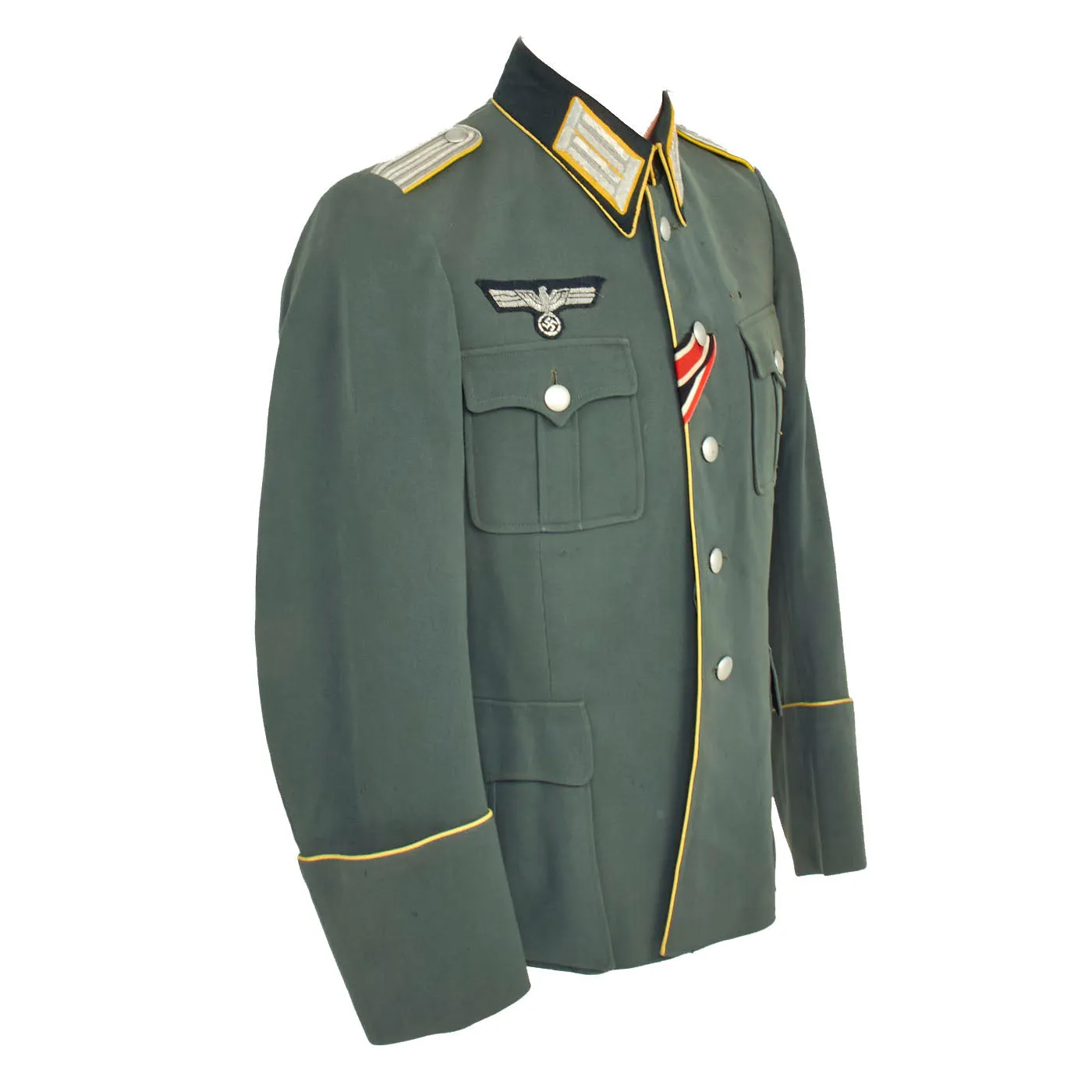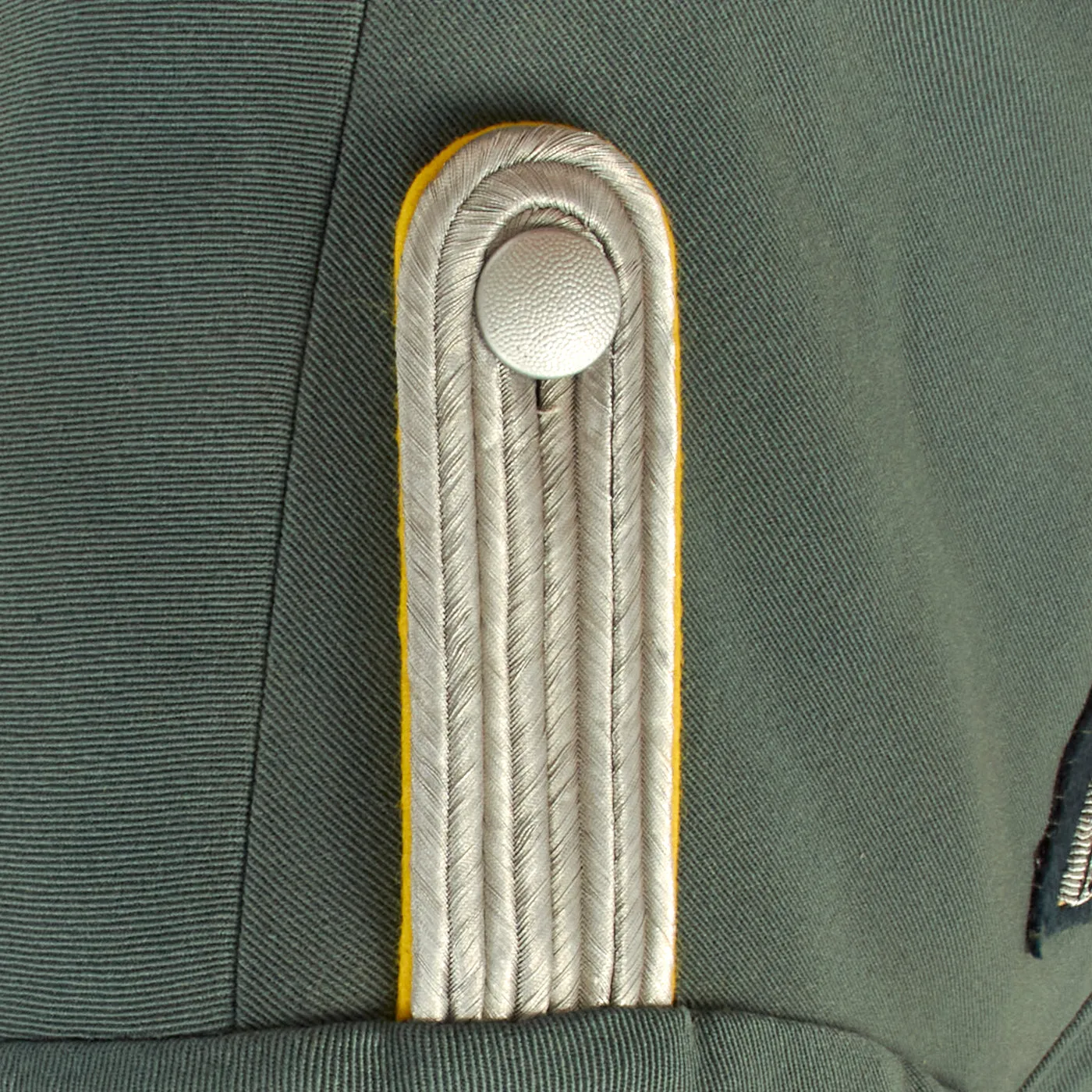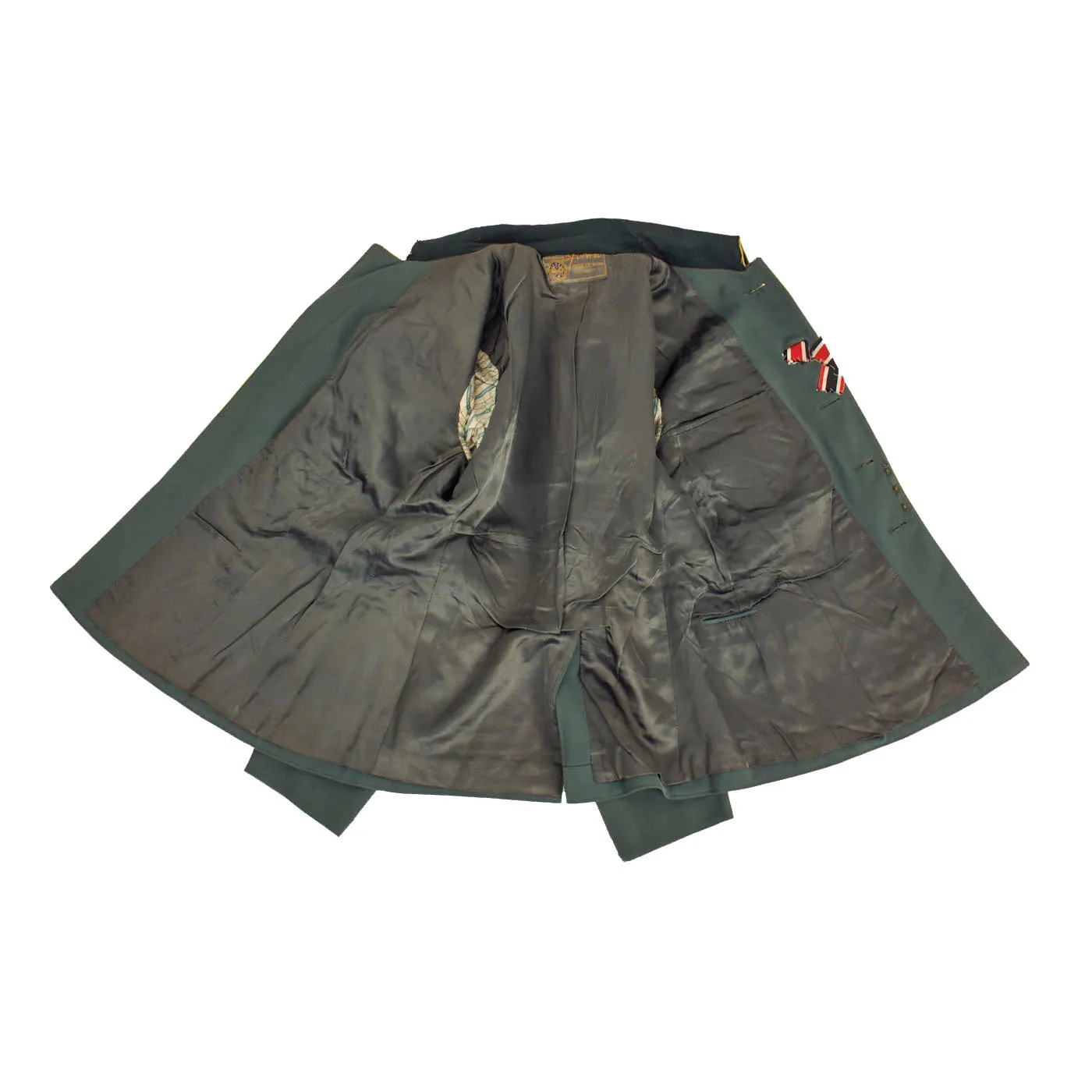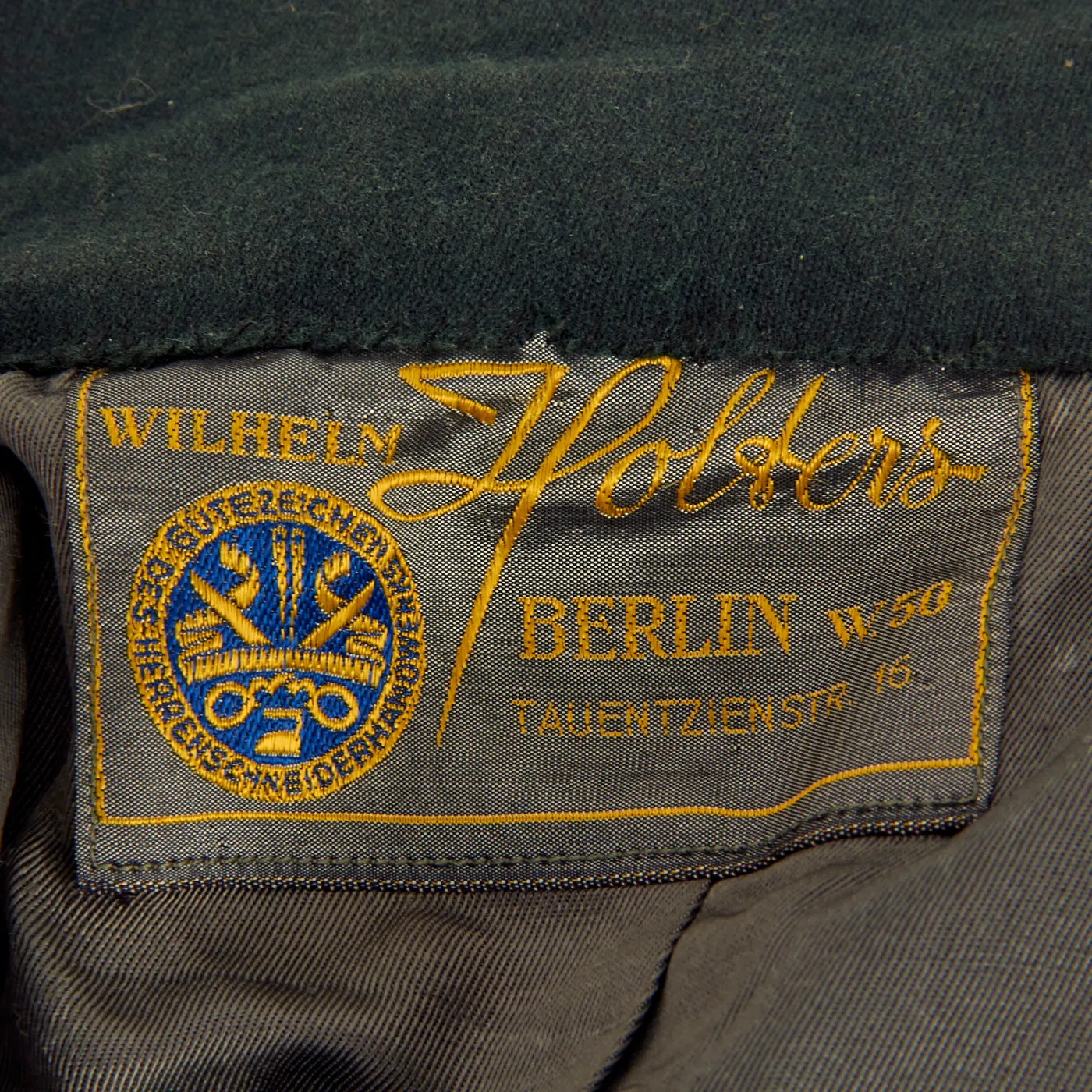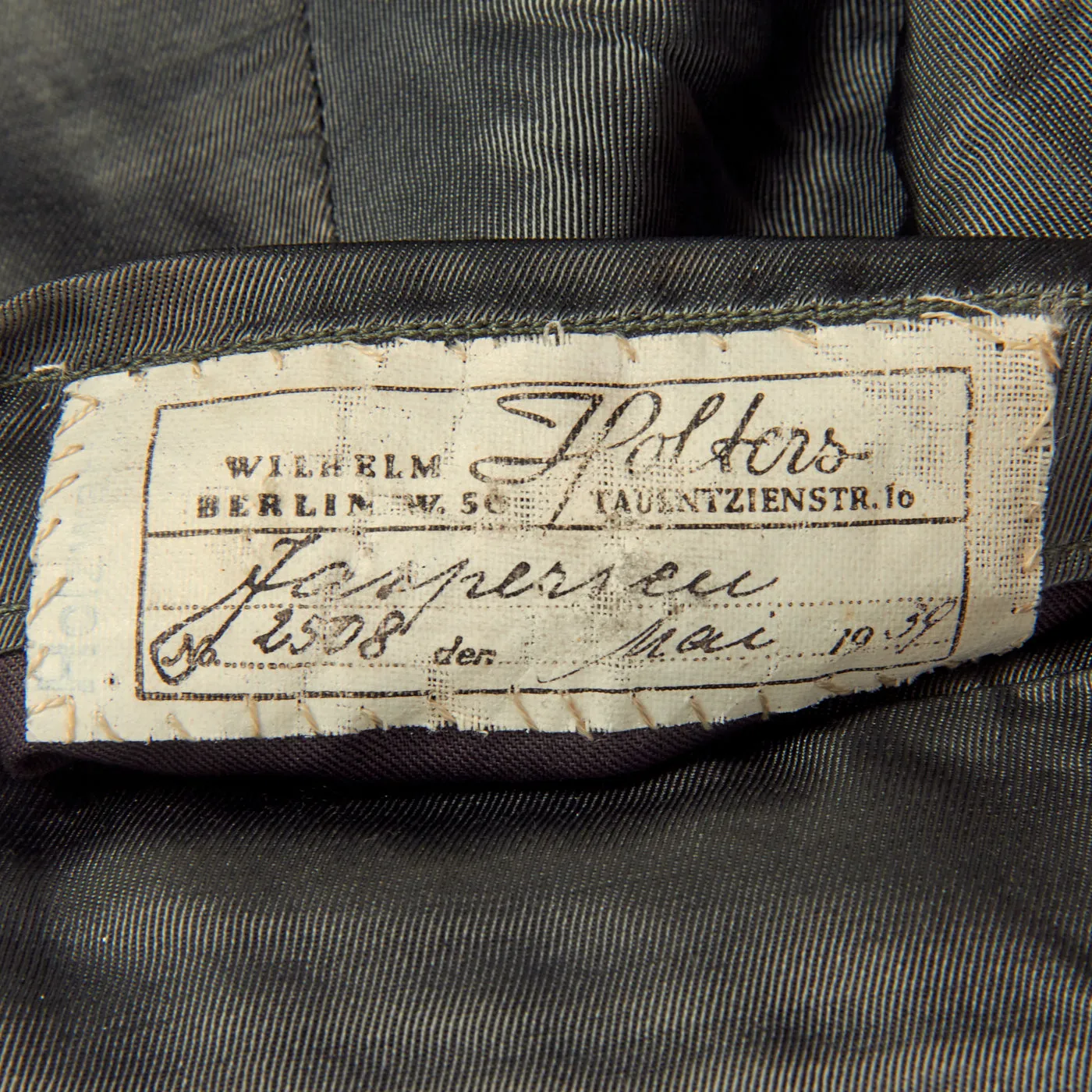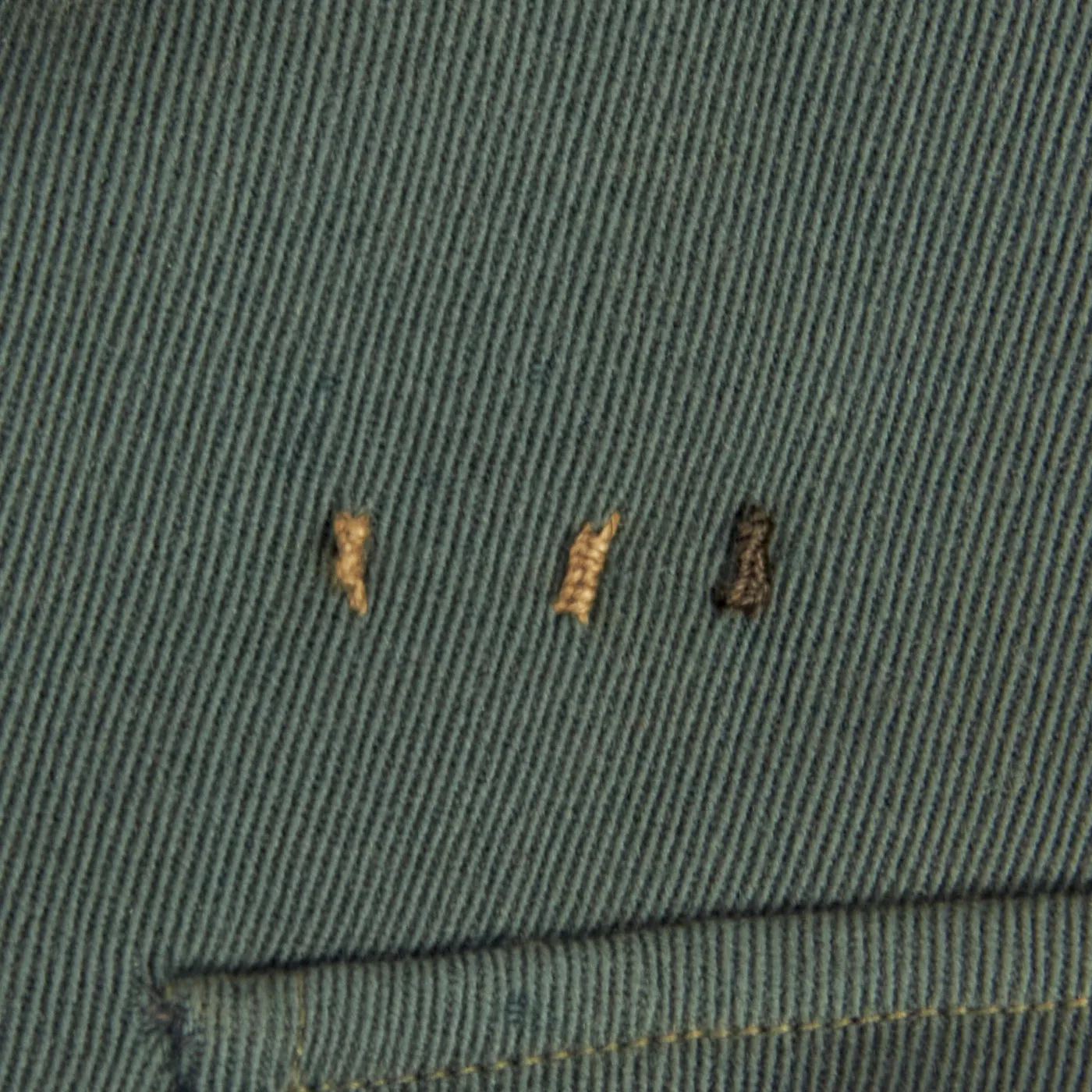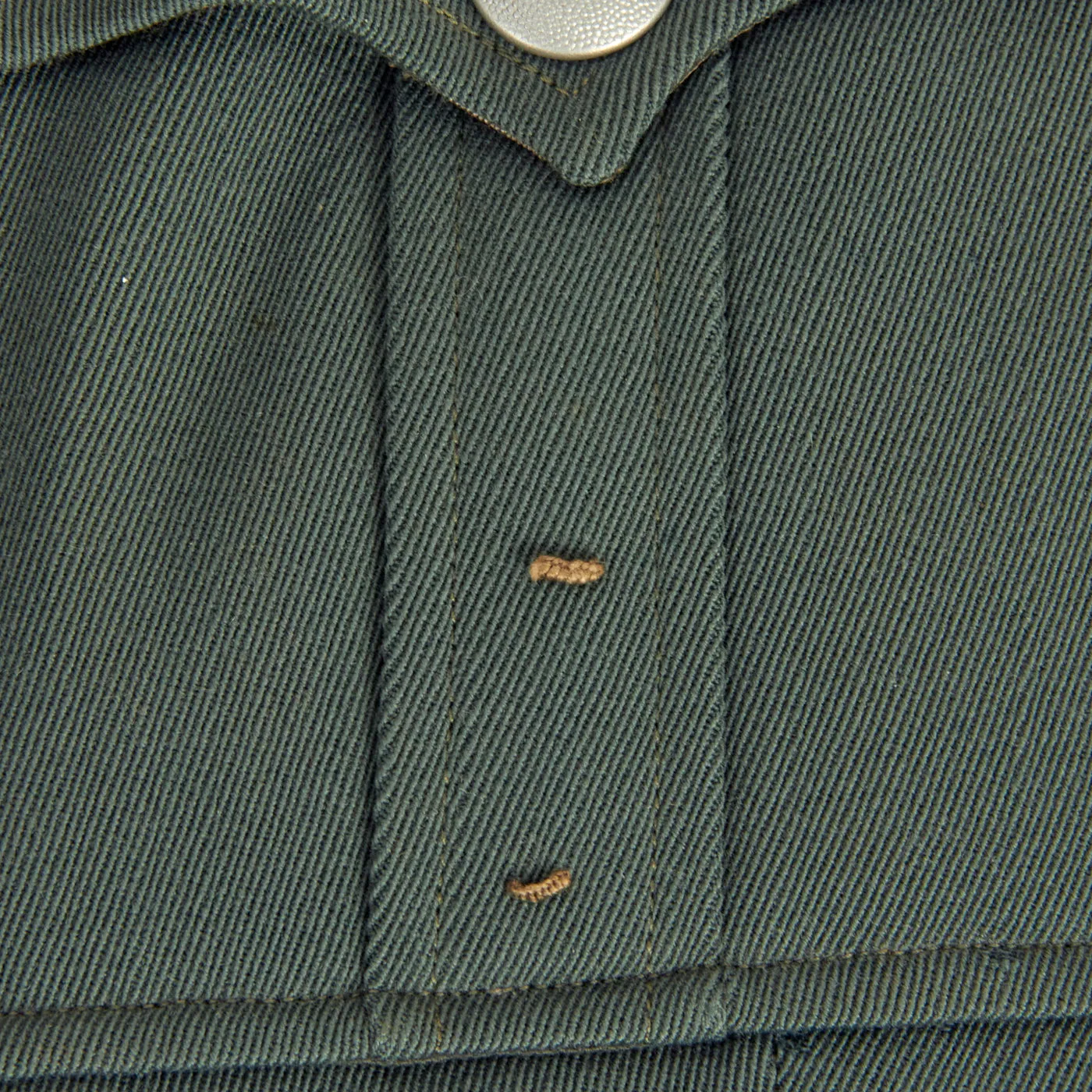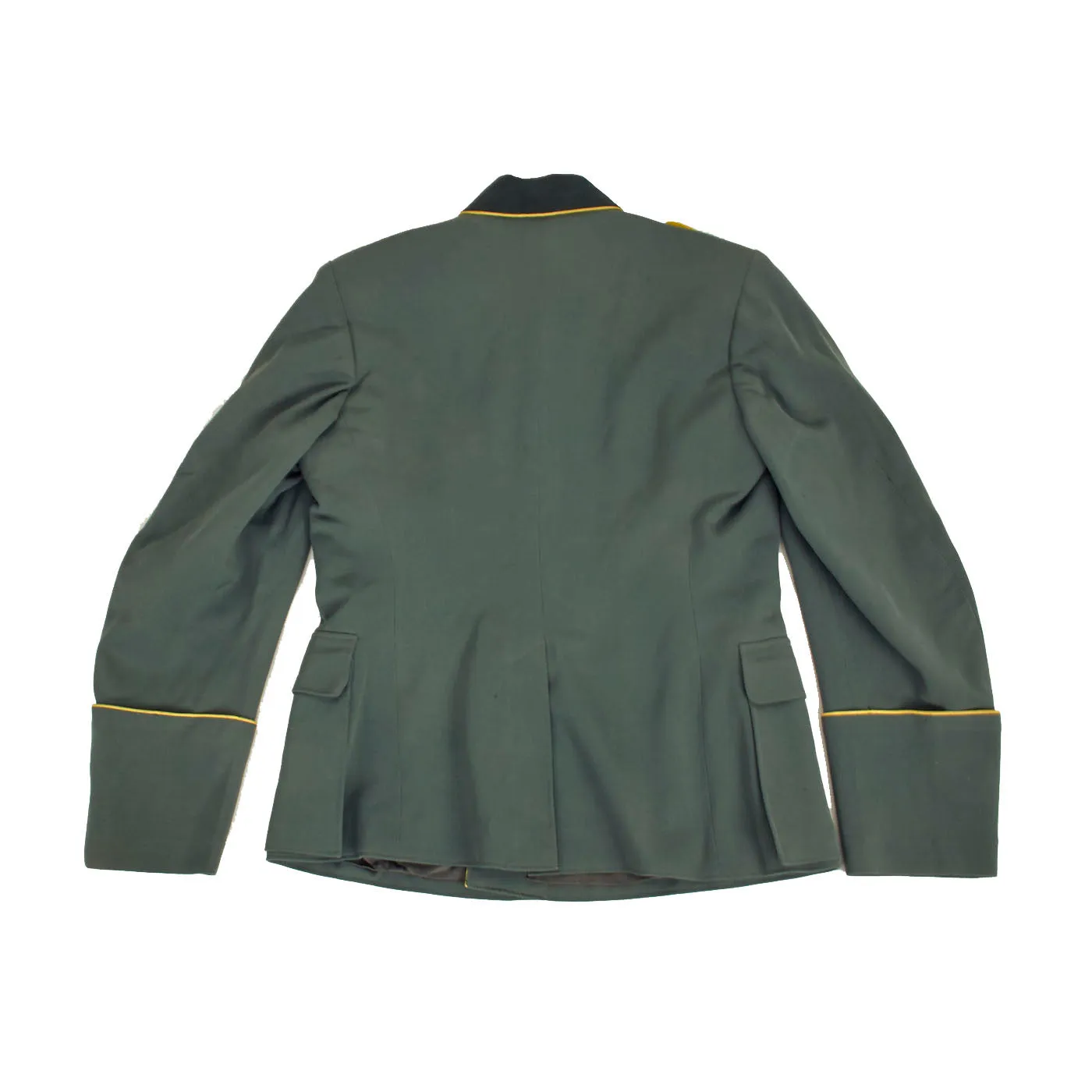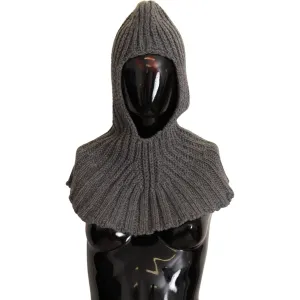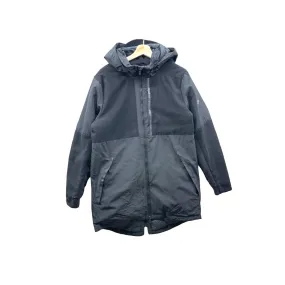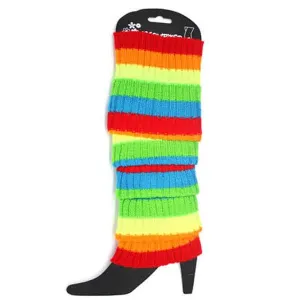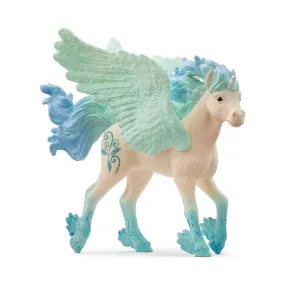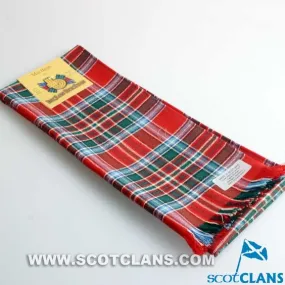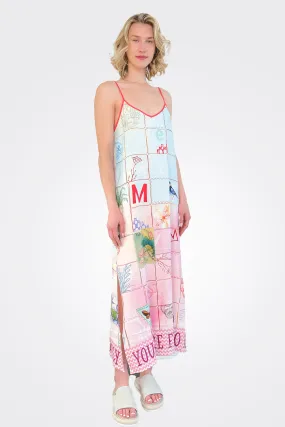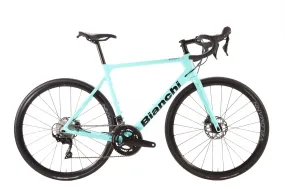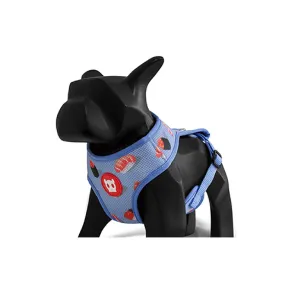Original Item: Only One Available. This is a very nice early pattern German WWII Heer Army M-36 Tunic, showing some service wear and in very good display condition. It has a makers label under the collar from Wilhelm Holters of Berlin, indicating the address. Even better, the original name label from the tailor inside the pocket is still legible, giving the name as Jaspersen and a date of Mai 1939. Research indicates this is possibly Karsten Jaspersen, as listed on this website link: . There was a printout of this website included in the pocket, however we have no way to definitively say that this was their tunic.
The tunic features four pockets with scalloped flaps and pebbled aluminum buttons, and has a five button front closure, with two "hook and loop" fasteners for the collar. There are also three small snaps between the two lowest buttons to keep the belt from separating the closure. It is adorned with the usual rank and branch insignia used on German tunics. The collar, front closure, and cuffs have colored piping, which along with the smooth "whipcord" weave indicate that this is a dress tunic, and not intended for use in the field. The attractive Army breast eagle is the correct officer's silver bullion hand embroidered type on a green background, and is very neatly hand stitched to the chest in a fashion typical of wartime German tailor work.
The collar is wrapped in a dark-green wool, has officer's dress litzen collar patches on each side, which are woven from silver bullion thread on a Zitronengelb (lemon-yellow) felt background, which matches the piped trim on the uniform. This is the Waffenfarbe (corps color) used by the Heer Army Signal corps, responsible for setting up and maintaining communication equipment. The collar is in good shape, tough there definitely is some wear to the nap of the fabric, with a worn hole near the bottom rear corner of the left litzen patch.
The “sew-in” style company grade officer schulterklappen (shoulder boards) of this tunic are constructed with two rows of fine silver flatware "Russia Braid" double piping and have the correct Lemon-yellow piping around the edges. There are no rank "pips" installed, indicating the junior officer rank of Leutnant, equivalent to a U.S. Army 2nd Lieutenant. The second button hole from the top has two medal ribbons installed, for the Iron Cross 1939 and another for the War Merit Cross. There are some thread loops on the left breast where medals were once displayed.
Overall condition is very good, though there is some wear and staining consistent with service. We did notice a few holes as well, but overall it displays very nicely. Ready to out fit with medals and display!
Approximate Measurements:
Collar to shoulder: 9.5”
Shoulder to sleeve: 26.5”
Shoulder to shoulder: 15”
Chest width: 18.5”
Waist width: 18”
Hip width: 19”
Front length: 28.5"
Terms such as M40 and M43 were never designated by the Wehrmacht, but are names given to the different versions of the Model 1936 field tunic by modern collectors, to discern between variations, as the M36 was steadily simplified and tweaked due to production time problems and combat experience.
Field Tunic (Feldbluse) Model 1936
When the NSDAP came to power in early 1933 the Reichswehr, the armed forces of the Weimar Republic, were near the end of a two-year project to redesign the Army Feldbluse (field-blouse). Beginning in that year the new tunic was issued to the Reichsheer and then the rapidly growing Wehrmacht Heer, although minor design changes continued to be made until the appearance of the standardized Heeres Dienstanzug Modell 1936. The M36 tunic still retained the traditional Imperial and Reichswehr uniform color of grey-green "field gray" (feldgrau) wool, but incorporated four front patch pockets with scalloped flaps and pleats (on Reichswehr tunics the lower pockets were internal and angled). The front was closed with five buttons rather than the previous eight, and the collar and shoulder straps were of a dark bottle-green instead of the Reichswehr grey. Compared to the Weimar-era uniforms the skirt of the feldbluse was shorter and the tailoring was more form-fitting due to Germany's adoption of mechanized warfare: soldiers now spent much time in the confined space of a vehicle and a shorter jacket was less likely to pick up dirt from the seats. It also included an internal suspension system, whereby a soldier could hang an equipment belt on a series of hooks outside of the tunic. These hooks were connected to two straps inside the lining, which spread the weight of equipment without having to use external equipment suspenders. The M36 was produced and issued until the very end of the war, though successive patterns became predominant.
SS field uniforms were of similar appearance externally but to fit their larger patches had a wider, feldgrau collar, and the lower pockets were of an angled slash type similar to the black or grey SS service-dress. The second button of an SS Feldbluse was positioned somewhat lower, so that it could be worn open-collar with a necktie. Due to supply problems the SS were often issued army uniforms.




